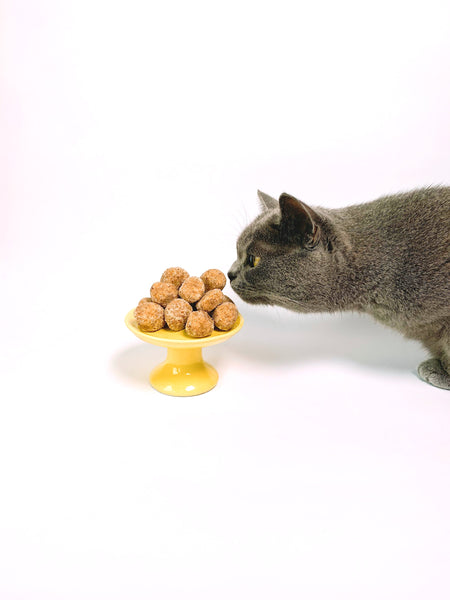
Cats' nutritional needs vary throughout their lives. As kittens, they need nutrient-rich food to help them grow. But as they grow older and reach their adult size, you need to switch them from kitten to adult food.
If you've got a senior cat on your hands, you'll need to shift to a healthier diet. Apart from the age factor, you may also want to change your cat's food if it is sick, or experiencing unhealthy weight loss or gain.
In case you're wondering how to change your cat's food as it ages, here’s how to do it:
Transition Preparation
Keep in mind the developmental stages of your cat when you pick cat food. As your cat grows, you should also try to vary the brands and texture of the food. This will help you find the best-suited product for your cat.
Make sure the transition is gradual. Abrupt and sudden changes may cause your cat gastrointestinal trouble. When introducing a new diet, ensure you add a bit of the new food with the old one that your cat is used to. Maintain the same portion size to allow your cat to get used to the new taste at a comfortable pace.
To make this transition even smoother, you can follow the seven-day transition schedule, which goes like this:
- On days 1 and 2 you can give your cat one-quarter of the new food and three-quarter of the old food.
- On days 3 and 4, you can make a half-and-half mixture of the new and old food.
- On days 5 and 6, mix three-quarters of the new food and one-quarter of the old food.
- And on day 7, you can give your cat an entire portion of new food.
Keep Anxiety In Check During The Transition
Ensure you make the transition as smooth as possible. Create a relaxing and hospitable environment for your cat to reduce any anxiety around the change in its food.
The space where you serve your cat its food should be calm and noiseless. Also keep away other pets, including your other cats from the area.
If you are giving your feline companion canned food, make sure you bring it to room temperature before serving it. You can also microwave and mix the meat properly so that it is at a uniform temperature.
During this transition, you can try feeding your cat by hand if your cat enjoys it.
Evaluate The Growth
So what is the perfect time to change your cat's food? The best way to determine this is to consult your veterinarian. They will help you out with when to begin the transition. They will also let you know what you can expect during this period, such as weight gain or loss.
Here's a useful trick. If you measure your cat’s growth regularly, you will notice a period when your cat stops growing. This will happen when your cat is around one year old. This is a good indication that you should change your cat’s food. Depending on the breed, it might take a little more time or a little less for your cat to become an adult.
If you already have an adult cat, the next transition will take place when your cat becomes a senior. Usually, cats are considered senior when they are 9 or 10 years old. Their food, at this time, will need to have adequate fiber content, minerals, vitamins, antioxidants, and fatty acids.
Conclusion
Even though you need to change your cat’s food as it grows older, you should keep in mind that your cat will not like a sudden change. You should also avoid changing the cat's food frequently, as this can make them ill. Cats prefer consistent meals, so give them time and provide a supportive environment before changing their food.
